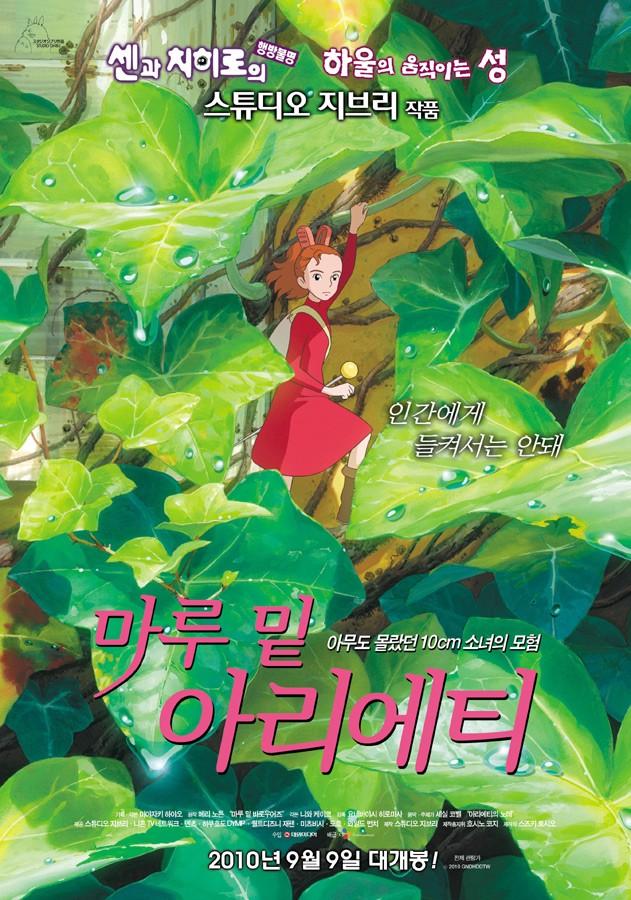Homage to Miyazaki: The Secret World of Arrietty
Photo courtesy of http://movie.naver.com/movie/bi/mi/basic.nhn?code=73301. “The Secret World of Arrietty” is a lighthearted film by Studio Ghibli.
March 13, 2016
The film that I introduce today may be one of the most recent works produced by Studio Ghibli. A simple movie of family and fantasy, it is “The Secret World of Arrietty.”
This is a film directed not by the founder Hayao Miyazaki, but by Ghibli’s former member, Hiromasa Yonebayashi. Thus, it is difficult to find anything distinctly “Hayao”-esque about this film. However, that does not mean that this film is not as appealing as the others that Ghibli has featured in the past–while we don’t find the surrealist undertone of Miyazaki’s works in “Arrietty,” we definitely notice the “Ghibli vibe” throughout the film.
Many of Studio Ghibli’s works use fantasy to evoke a message about the character’s reality. “Spirited Away” is a perfect example for such idea–the main protagonist of the film encounters a universe of mythical creatures and monsters in order to accept her coming-of-age. “My Neighbor Totoro” is another–two sisters become friends with a mythical racoon-like creature as they experience their new lives with the absence of their mother.
“Arrietty” is another addition to the continuing theme that Miyazaki evokes in his films, and this time, it is about a family who act and look human, except that they are extremely, and really, small.
This is the Clock family, who have built their own home inside the residence of another. Called “little people” by the humans, the Clocks avoid interacting with them until Arrietty befriends Sho, a young boy who resides in the house.
The story is simple–in fact, it might be too straightforward for a full-length film. Nevertheless, it is not the complexity of the plot that attracts many fans to Studio Ghibli–it is the visually stunning illustrations that set the Japanese animation characteristic to other films.
The exquisite details of the film, in which each scene evokes a sense of antiquated, hand-and-pencil style of illustrations, are elements that truly make this film unique and “Ghibli”-like. And this is something that most of Miyazaki’s films are successful in. It is remarkable, considering that all of the scenes are products of pure imagination.
This is a story of family, friendship and love. I recommend this film to anyone who wants to spend their time with a heartwarming film–there is nothing dramatic in “Arrietty,” but there is something that makes the audience smile about this film. Perhaps, this is a modern-day fairy tale.






